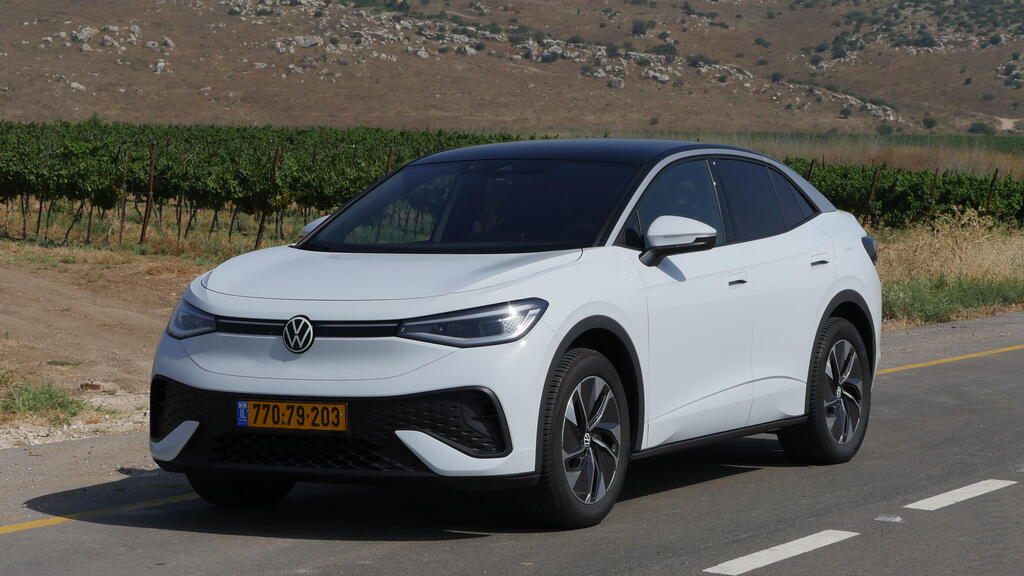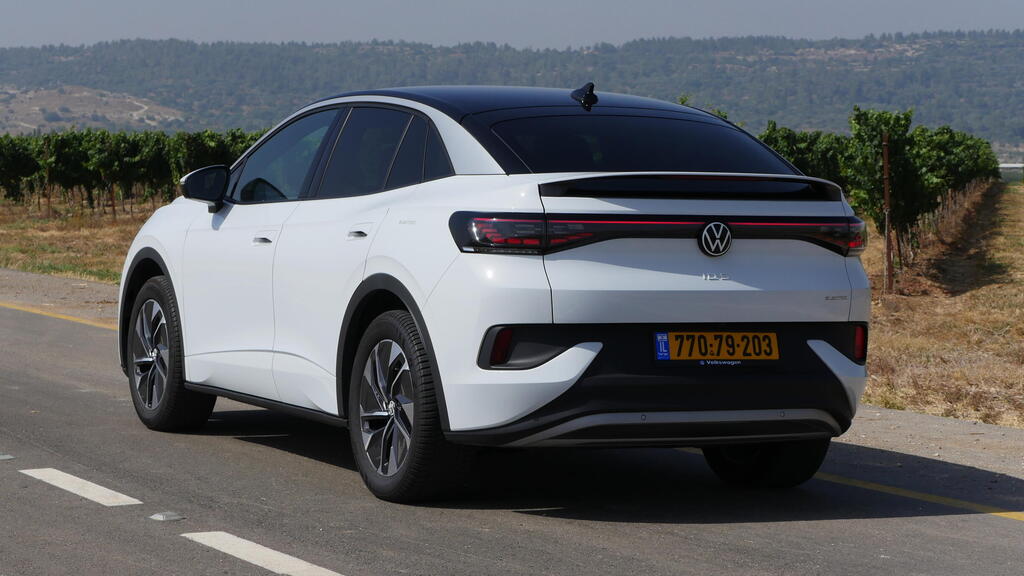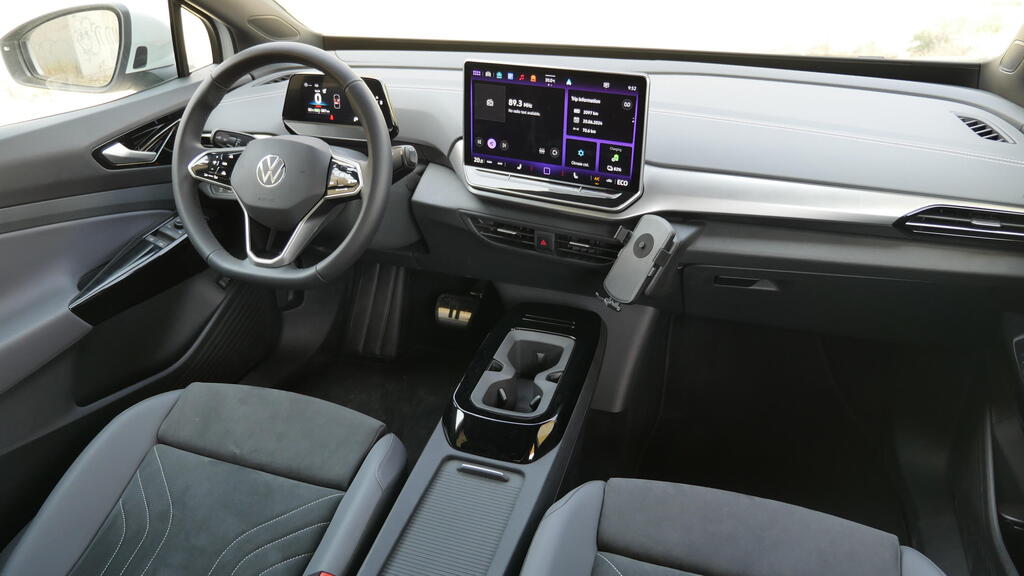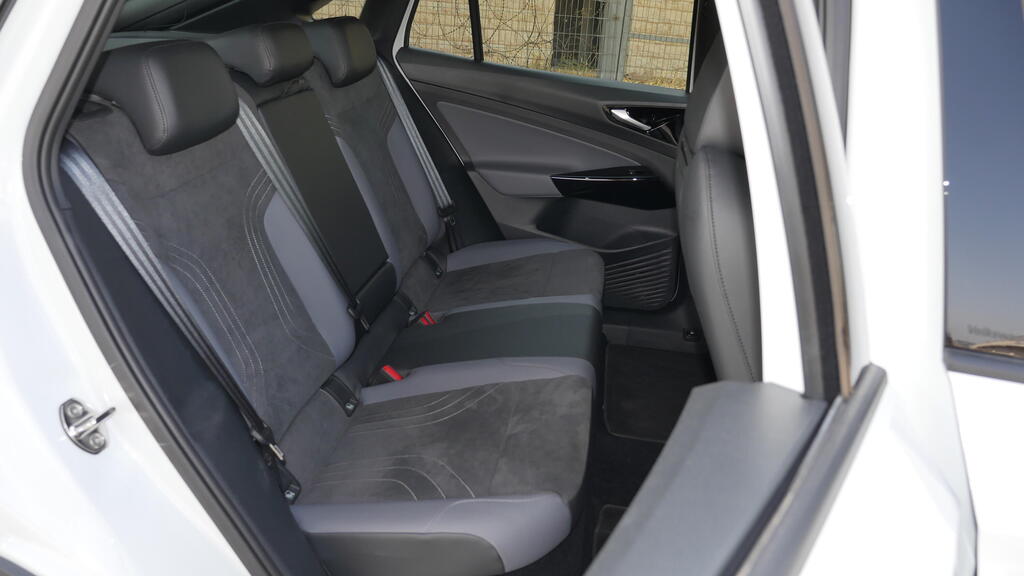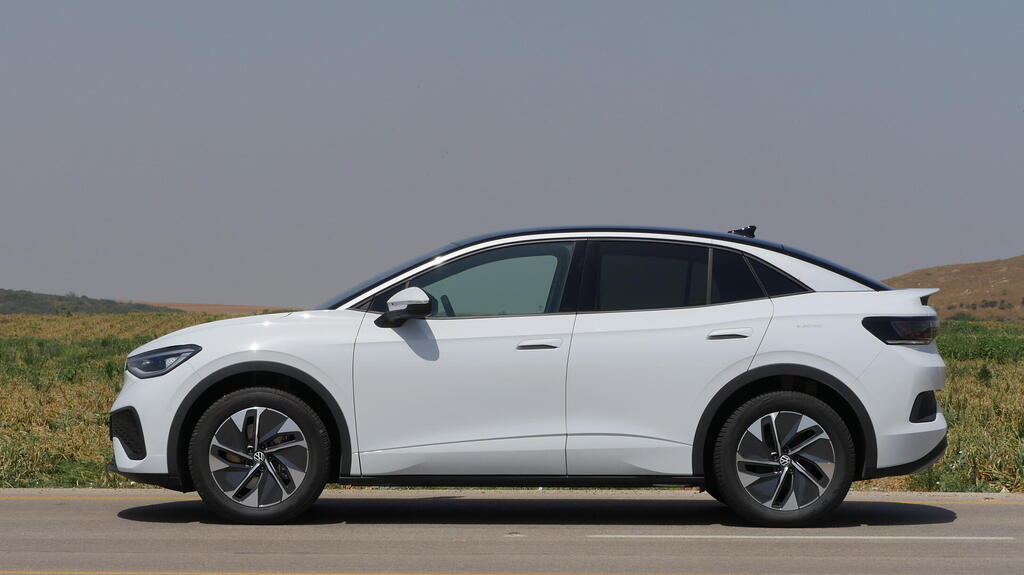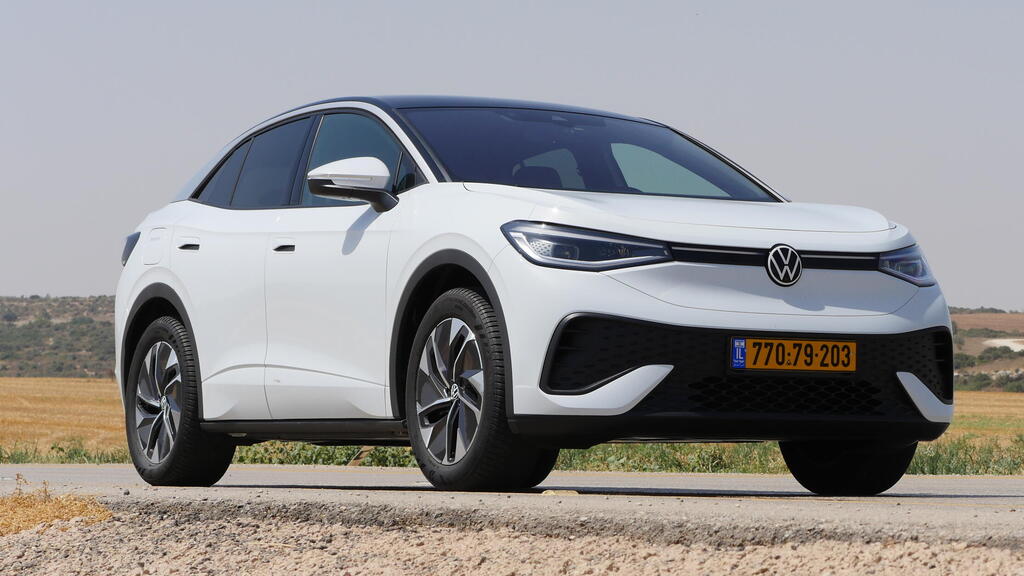Volkswagen has impressively embraced the electric vehicle market, after years of sitting on the sidelines. This shift began primarily with the launch of the ID series in 2019. However, in Israel, the rollout has been frustratingly slow for both consumers and importers, who face frequent bureaucratic hurdles.
The ID.3, the founding model of the series and a sales hit in Europe, never officially arrived in Israel despite promises. The ID.4 has been the sole representative in local showrooms since its arrival at the end of 2022. Now, it is joined by the coupe version, the ID.5, introduced almost three years ago and driven by us for the first time nearly two years ago.
The ID.5 is intriguing not only for its stylish design but also because it features a new (and significantly more powerful) powertrain that Volkswagen unveiled a few months ago and is now integrated here for the first time.
It boasts a more attractive design than its familiar sibling without compromising on space and utility. It comes with a rich equipment list, good performance, and a generous driving range. However, it still suffers from unremarkable ergonomics, unimpressive urban comfort, and only moderate dynamic capabilities. These issues are unlikely to prevent its success.
What might hinder its success is its price tag, which is at the high end of the category, far from the entry-level versions of excellent competitors like the Hyundai Ioniq 5 and Tesla Model Y. The brand's salespeople will face a tough challenge convincing buyers, and it’s uncertain if even their efforts will be enough.
The most noticeable change compared to the ID.4 is, of course, at the rear, with a sloping roof that gives it a coupe-SUV look, a common trend in the electric era seen also in Skoda and Audi models. It looks much more dynamic, not just because of the rear spoiler, and also contributes to a lower drag coefficient (0.26 vs. 0.28). At the front, there's the usual brand-wide light strip across the grille and impressive Matrix-LED headlights.
The interior is up-to-date, with a large 12.9-inch touchscreen that is much easier to use than previous Volkswagen models. It includes customizable controls, and the operation bars underneath it are illuminated but still touch-based, and the steering wheel buttons are not user-friendly.
The digital dashboard is still relatively small at 5.3 inches, with a drive mode selector to the right of the steering wheel, freeing up space for large storage compartments between the driver and front passenger. The driver’s seat offers good comfort and support, including an extendable seat base. Front visibility is good, but the angle of the A-pillar limits side visibility, and the spoiler hampers rear visibility.
The wheelbase (277 cm) is the same as the ID.4, providing good rear-seat living space without sacrificing headroom, and rear passengers also benefit from separate climate controls and two USB ports. The trunk volume is similar (549 liters) with a wide opening but no front trunk, as is common in modern electric vehicles.
The test vehicle's equipment list is extensive, including electric adjustment and heating for the front seats, surround cameras, a wireless charging pad, and an electric tailgate. The safety system includes autonomous braking, lane-keeping assist, adaptive cruise control, and active blind-spot warning that prevents lane changes when not clear.
The new powertrain produces 286 hp, an increase of 82 hp compared to the ID.4's engine, with torque up by 75% to 550 Nm. This is definitely noticeable, with 0-100 km/h in 6.7 seconds, nearly two seconds faster than the ID.4. It also has faster overtaking ability and can maintain a brisk pace on mountainous roads with plenty of power reserves.
The regenerative braking has only two intensity settings, chosen via the selector to the right of the steering wheel, but even the strongest setting doesn’t allow for "one-pedal driving" as seen in modern electric vehicles. An automatic mode, available in models like the Audi Q4, which slows the car based on road users and radar data, is also missing.
The 82 kWh battery promises a driving range of 522 km. We achieved an average energy consumption of 17.1 kWh per 100 km and a range of 450 km, a respectable figure considering the high temperatures. We were also impressed by the high charging rate, exceeding the manufacturer's claim (145 kW vs. 135 kW), which allowed the battery to charge from 10% to 80% in just half an hour.
Urban ride comfort is decent but not exceptional, and the suspension struggles with the vehicle’s weight. Adaptive shock absorbers could improve the situation, but they are not offered here. Comfort improves outside the city, and the ID.5 provides a pleasant long-distance ride, though road noise is present in the cabin.
The main reason for this is the importer’s puzzling choice of all-season tires (Bridgestone Weather Control A005) focused on wet or snowy conditions, contrary to the tire used at the vehicle’s launch - the Hankook Ventus S1 Evo EV, a dedicated electric vehicle tire with very low noise and high dry road performance. Handling is safe but unremarkable, with pronounced body roll and relatively low grip due to the tires. The brakes are spongy and lack sufficient feel, and the steering ratio is long (3.25 turns lock-to-lock), but maneuverability is excellent with a turning radius smaller than a Polo (10.2 meters).


